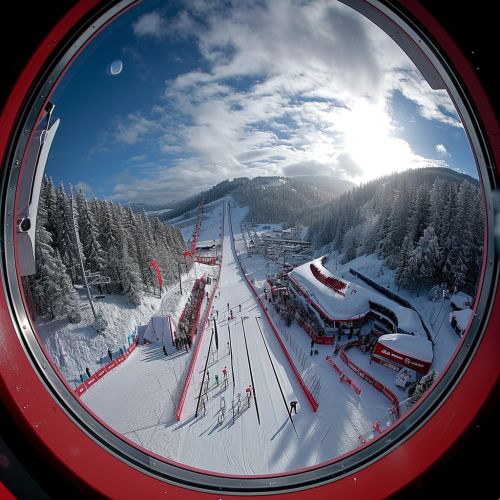FIS Nordic Combined World Cup
Overview
The FIS Nordic Combined World Cup is an annual Nordic combined competition organized by the International Ski Federation (FIS). The World Cup was first held in the 1983-1984 season and has since become the premier competition in Nordic combined at the international level. The competition consists of a series of events held across various countries during the winter season, with athletes accumulating points based on their performance in each event. The athlete with the most points at the end of the season is declared the overall World Cup winner.
History
The FIS Nordic Combined World Cup was established in 1983 by the International Ski Federation, the governing body for international skiing competitions. The first season of the World Cup was held in the winter of 1983-1984, with the inaugural event taking place in Seefeld in Tirol, Austria. The competition was initially dominated by athletes from Norway and Finland, but over the years, competitors from a variety of countries have achieved success in the World Cup.
Competition format
The FIS Nordic Combined World Cup consists of a series of events held over the winter season, typically from November to March. Each event includes two disciplines: ski jumping and cross-country skiing. In the ski jumping portion, athletes compete on a large or normal hill and are scored based on the distance of their jumps and their style. The cross-country skiing portion is a race in which the start times are determined by the results of the ski jumping. This format, known as the Gundersen method, ensures that the first athlete to cross the finish line is the overall winner of the event.
Each event in the World Cup awards points to the top 30 finishers, with the winner receiving 100 points. The points from each event are added together to determine the overall World Cup standings. The athlete with the most points at the end of the season is declared the overall World Cup winner. In addition to the overall title, there are also World Cup titles for the best performer on the large hill and the best performer in the sprint events.
Venues
World Cup events are held at various venues across Europe, North America, and Asia. These venues are typically located in areas with a strong tradition of Nordic sports, such as Norway, Finland, Germany, and Austria. Some of the most notable venues include the Holmenkollen Ski Festival in Oslo, Norway, and the Lahti Ski Games in Lahti, Finland. Each venue presents unique challenges for the athletes, with variations in the ski jumping hills and cross-country courses.
Notable athletes
Over the years, the FIS Nordic Combined World Cup has been dominated by a number of notable athletes. These include Bjarte Engen Vik of Norway, who won the overall World Cup title five times in the 1990s, and Hannu Manninen of Finland, who won four consecutive titles from 2004 to 2007. More recently, Eric Frenzel of Germany has been a dominant force in the World Cup, winning the overall title seven times between 2013 and 2019.
Women in Nordic Combined
While the FIS Nordic Combined World Cup has traditionally been a men's competition, there has been a growing push in recent years to include women in the sport. In 2018, the FIS held the first ever Women's Nordic Combined World Cup, with the inaugural event taking place in Lillehammer, Norway. The establishment of the Women's World Cup represents a significant step forward in the recognition and development of women's Nordic combined at the international level.
See Also


